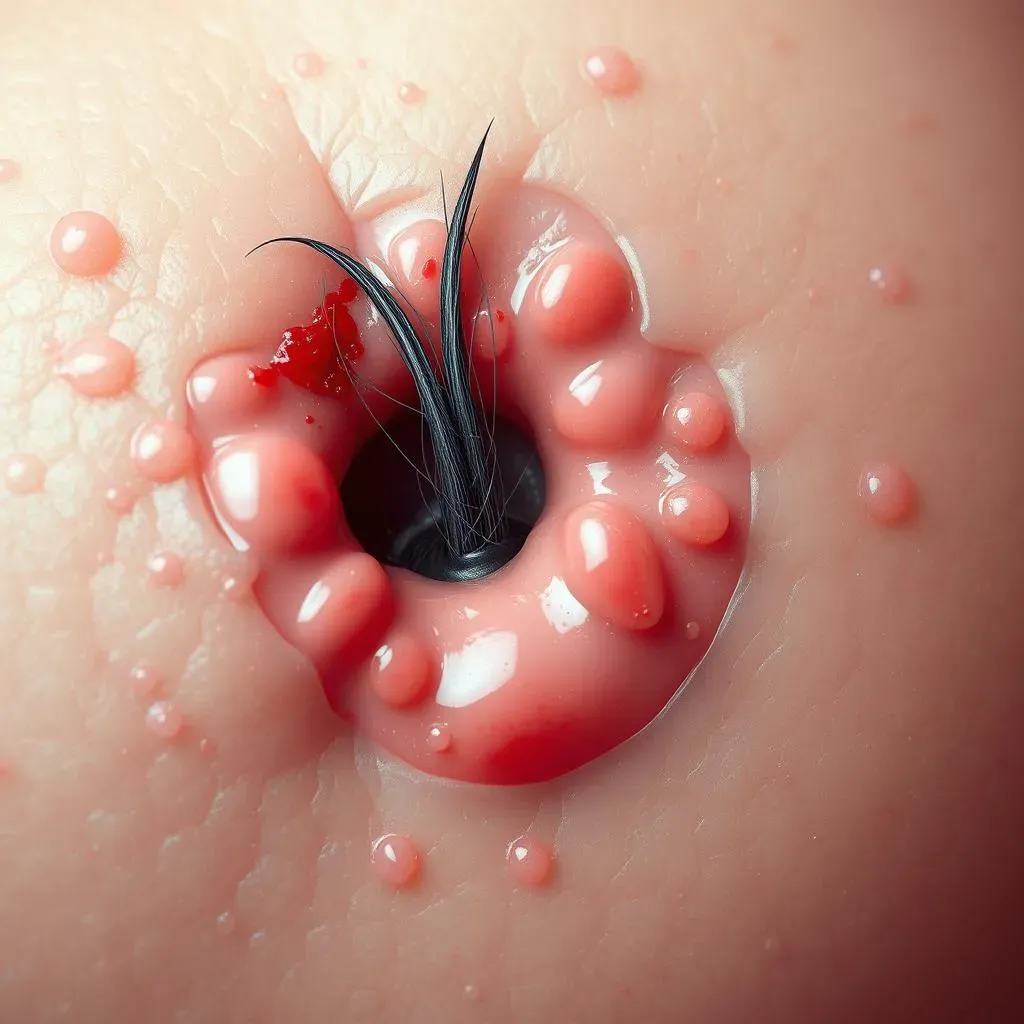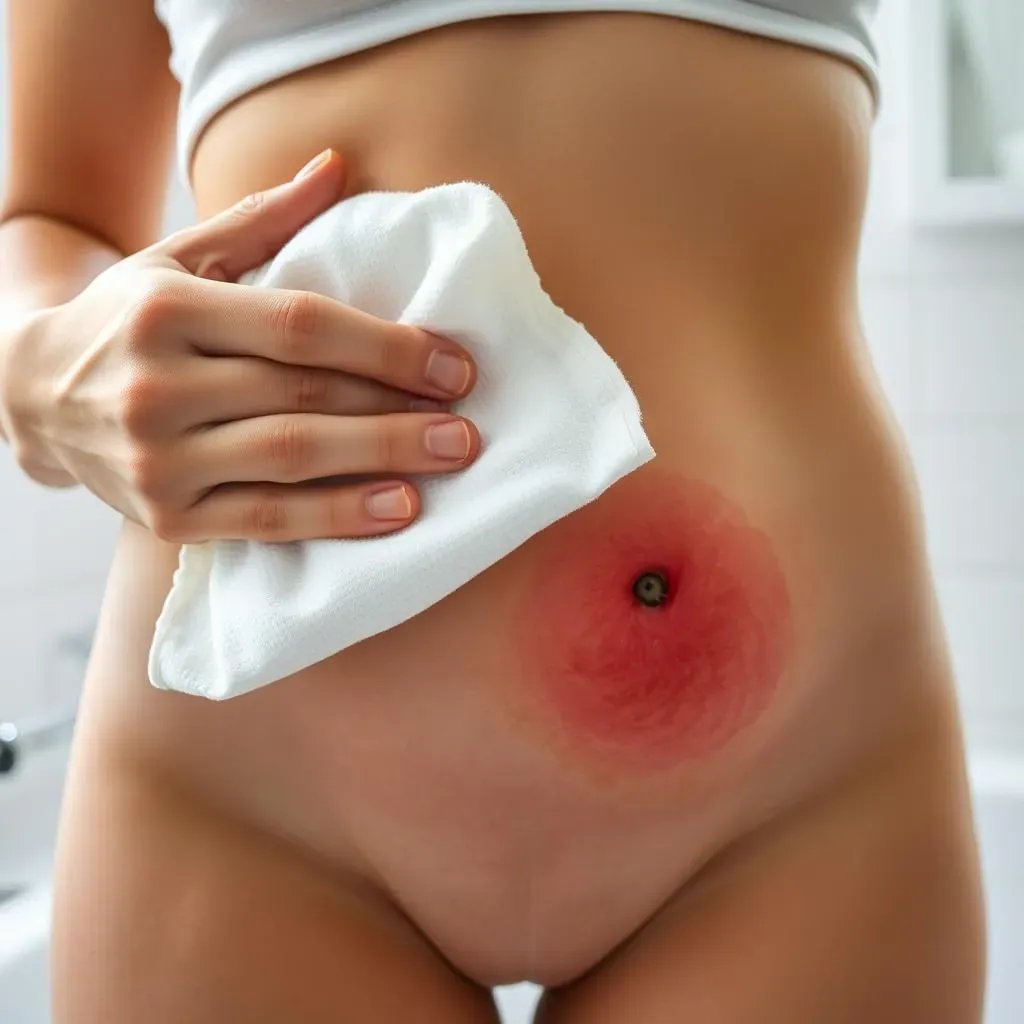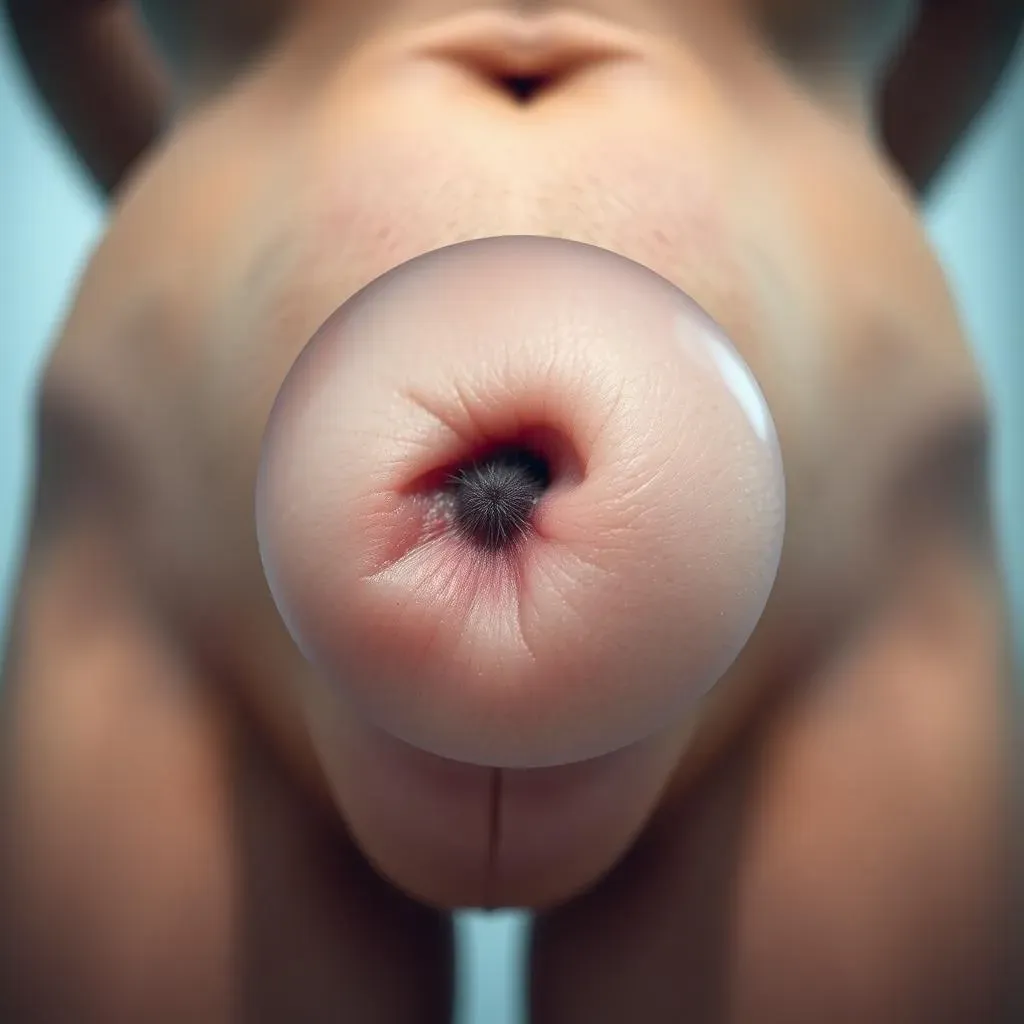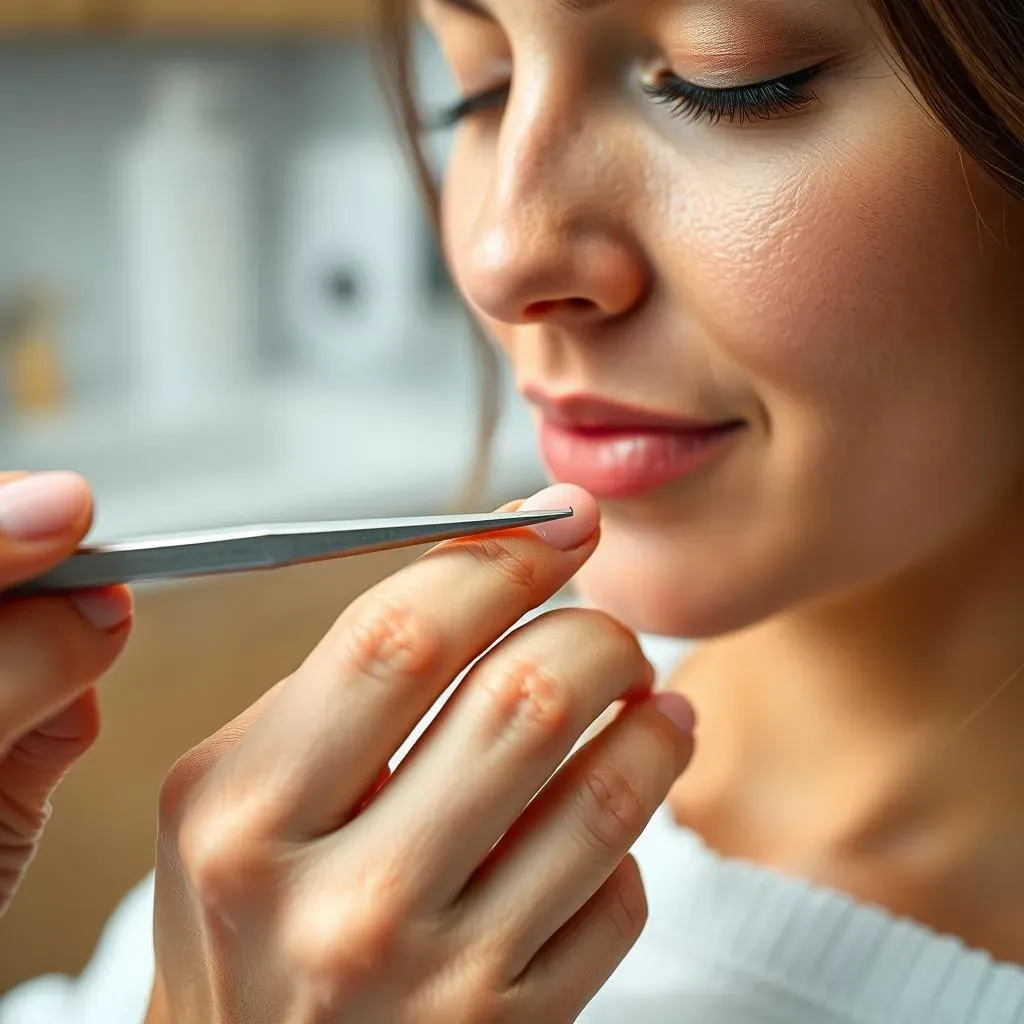Table of Contents
Ingrown pubic hair can be a frustrating and painful condition, causing discomfort and embarrassment for many. Removing ingrown pubic hair requires careful consideration to avoid further irritation and potential infection. In this article, we'll delve into the symptoms and causes of ingrown pubic hair, and explore effective methods for removing ingrown pubic hair. From home remedies to professional treatments, we'll discuss the best approaches for bringing the hair to the surface, extracting it safely, and preventing future occurrences. Whether you're looking for DIY solutions or considering advanced treatments like laser hair removal, we've got you covered. Our goal is to provide you with the knowledge and confidence to tackle ingrown pubic hair and achieve smooth, healthy skin. So, let's get started on the journey to ingrown pubic hair-free living, focusing on the most effective ways for removing ingrown pubic hair.
Understanding Ingrown Pubic Hair: Symptoms and Causes

Understanding Ingrown Pubic Hair: Symptoms and Causes
What are Ingrown Pubic Hairs?
Ingrown pubic hair occurs when a hair grows back into the skin instead of outward, causing inflammation, redness, and sometimes infection. This condition is more common in areas where the skin is thicker, such as the pubic region. Ingrown hairs can be painful and itchy, and if left untreated, may lead to more serious complications.
Symptoms of ingrown pubic hair include small, raised bumps on the skin, which can be painful to the touch. In severe cases, the bumps may become infected, leading to increased redness, swelling, and pus. If you're experiencing any of these symptoms, it's essential to take action to prevent further irritation and promote healing.
Symptom | Description | Severity |
|---|---|---|
Painful bumps | Small, raised bumps on the skin that are painful to the touch | Mild to severe |
Itchiness | Intense itching sensation in the affected area | Mild to moderate |
Infection | Increased redness, swelling, and pus around the ingrown hair | Severe |
Causes and Risk Factors
Ingrown pubic hair is often caused by improper hair removal techniques, such as shaving too closely or using dull razors. Other risk factors include tight clothing, curly or coarse hair, and poor skin care. To reduce the risk of ingrown hairs, it's crucial to adopt good hair removal habits and maintain healthy skin.
Some common causes and risk factors for ingrown pubic hair include:
- Shaving too closely or with a dull razor
- Waxing or tweezing, especially if done incorrectly
- Tight clothing that causes friction and irritation
- Curly or coarse hair, which is more prone to ingrown hairs
- Poor skin care, including infrequent exfoliation and moisturizing
Removing Ingrown Pubic Hair: Bringing the Hair to the Surface

Removing Ingrown Pubic Hair: Bringing the Hair to the Surface
Applying Warm Compresses
One of the most effective ways to bring an ingrown pubic hair to the surface is by applying a warm compress. Soaking a cloth in warm water, wringing it out, and applying it to the affected area for 10-15 minutes can help draw the hair out. Repeat this process several times a day to encourage the hair to emerge.
Warm compresses work by increasing blood flow to the area, which helps to bring the ingrown hair to the surface. This method is gentle and non-invasive, making it an ideal first step in treating ingrown pubic hair.
Compress Type | Application Time | Frequency |
|---|---|---|
Warm water compress | 10-15 minutes | Several times a day |
Tea tree oil compress | 5-10 minutes | 2-3 times a day |
Exfoliating the Skin
Gentle exfoliation can help remove dead skin cells and other debris that may be trapping the ingrown hair. Use a gentle exfoliating scrub or a chemical exfoliant containing alpha-hydroxy acids (AHAs) or beta-hydroxy acids (BHAs) 1-2 times a week.
Exfoliation helps to prevent dead skin cells from accumulating and allows the ingrown hair to surface more easily. Be cautious not to over-exfoliate, as this can irritate the skin and worsen the condition.
- Avoid using harsh exfoliants or rough cloths
- Exfoliate only 1-2 times a week
- Use gentle, fragrance-free cleansers
Using Topical Treatments
Topical creams and gels can help reduce inflammation and promote the emergence of the ingrown hair. Hydrocortisone cream can be applied to the affected area to reduce itching and swelling.
Salicylic acid, a beta-hydroxy acid, can be used to gently exfoliate the skin and encourage the hair to surface. Apply a small amount of salicylic acid gel to the area 1-2 times a day.
Treatment | Application | Benefits |
|---|---|---|
Hydrocortisone cream | Apply 1-2 times a day | Reduces inflammation and itching |
Salicylic acid gel | Apply 1-2 times a day | Exfoliates skin, encourages hair emergence |
Removing Ingrown Pubic Hair: Extraction Methods and Aftercare

Removing Ingrown Pubic Hair: Extraction Methods and Aftercare
Extracting the Ingrown Hair
Once the ingrown hair has surfaced, it's essential to remove it carefully to avoid further irritation. Use a pair of sterilized tweezers to gently grasp the hair and pull it out in the direction of hair growth. Avoid pulling or yanking the hair, as this can cause the hair to break and lead to further inflammation.
Before attempting to remove the ingrown hair, make sure to clean the area with soap and water. Apply an antibacterial ointment to the tweezers and the affected area to minimize the risk of infection.
Extraction Method | Description | Risk Level |
|---|---|---|
Using sterilized tweezers | Gently pull out the hair in the direction of growth | Low |
Shaving | Avoid shaving over the ingrown hair, as it can cause further irritation | High |
Depilatory creams | Chemical-based hair removal, may irritate the skin | Medium |
Post-Extraction Care
After removing the ingrown hair, it's crucial to keep the area clean and apply topical treatments to promote healing. Apply an antibacterial ointment to the affected area to prevent infection and reduce inflammation.
Avoid touching or scratching the area, as this can introduce bacteria and lead to infection. Keep the area moisturized with a fragrance-free lotion to promote skin health and prevent dryness.
- Apply antibacterial ointment immediately after extraction
- Keep the area clean with soap and water
- Moisturize the area regularly
- Avoid touching or scratching the area
Monitoring for Infection
After removing an ingrown pubic hair, it's essential to monitor the area for signs of infection. If you notice increased redness, swelling, pus, or increased pain, seek medical attention immediately.
Your doctor may prescribe antibiotics to treat the infection. In severe cases, the ingrown hair may need to be surgically removed.
Signs of Infection | Description | Severity |
|---|---|---|
Increased redness | Redness that persists or worsens over time | Mild to severe |
Swelling | Area becomes swollen and tender to the touch | Moderate to severe |
Pus | Pus or discharge from the affected area | Severe |
Preventing Ingrown Pubic Hair: Tips for Hair Removal and Skin Care

Preventing Ingrown Pubic Hair: Tips for Hair Removal and Skin Care
Proper Hair Removal Techniques
Preventing ingrown pubic hair starts with proper hair removal techniques. When shaving, use a sharp razor and shave in the direction of hair growth, not against it. This reduces the risk of cutting the hair at an angle, which can cause it to grow back into the skin. Additionally, exfoliate the skin before shaving to remove dead skin cells and help the razor glide more smoothly.
For those who wax or use depilatory creams, make sure to follow the instructions carefully and perform a patch test to check for any adverse reactions. It's also essential to clean and moisturize the skin after hair removal to keep it healthy and hydrated.
Hair Removal Method | Tips for Prevention | Risk Level |
|---|---|---|
Shaving | Shave in the direction of hair growth, use sharp razor, exfoliate before shaving | Low to moderate |
Waxing | Follow instructions, perform patch test, clean and moisturize after | Moderate |
Depilatory creams | Follow instructions, perform patch test, avoid sensitive areas | High |
Maintaining Healthy Skin
Maintaining healthy skin is crucial in preventing ingrown pubic hair. Wear loose, breathable clothing to reduce friction and irritation. Exfoliate the skin 1-2 times a week to remove dead skin cells and promote cell turnover. Keep the area clean and moisturized, using fragrance-free products to avoid irritation.
Avoid picking or scratching the skin, as this can cause irritation and lead to ingrown hairs. If you do experience ingrown pubic hair, avoid removing pubic hair until the condition heals to prevent further irritation.
- Wear loose, breathable clothing
- Exfoliate 1-2 times a week
- Keep the area clean and moisturized
- Avoid picking or scratching the skin
- Avoid removing pubic hair until ingrown hair heals
Advanced Solutions for Ingrown Pubic Hair Removal: Laser Hair Removal at HairAwayByLaser.com

Advanced Solutions for Ingrown Pubic Hair Removal: Laser Hair Removal at HairAwayByLaser.com
Introduction to Laser Hair Removal
Laser hair removal is a popular and effective method for removing unwanted hair, including ingrown pubic hair. At HairAwayByLaser.com, our team of experts uses the latest laser technology to provide safe and efficient treatments. Laser hair removal works by targeting the hair follicle with a beam of light, damaging it and preventing future hair growth.
This method is especially useful for individuals who experience frequent ingrown pubic hair due to curly or coarse hair. By reducing the amount of hair in the pubic area, laser hair removal can significantly decrease the risk of ingrown hairs. Additionally, laser hair removal promotes smoother skin and reduces the need for frequent shaving or waxing.
Benefits of Laser Hair Removal | Description | Advantages |
|---|---|---|
Permanent Hair Reduction | Significant reduction in hair growth after several sessions | Less frequent hair removal needed |
Smoother Skin | Reduced risk of ingrown hairs and razor burn | Improved skin texture and appearance |
Convenience | Less time spent on hair removal | Increased confidence and comfort |
How Laser Hair Removal Works
The laser hair removal process begins with a consultation to determine the best course of treatment. Our experts will assess your skin and hair type to choose the most suitable laser technology. During the treatment, a cooling gel is applied to the skin, and the laser is directed at the hair follicles. The laser emits a beam of light that targets the pigment in the hair, damaging the follicle and preventing future growth.
Multiple sessions are typically required for optimal results, spaced several weeks apart. After each session, the treated area may appear red or swollen, but this is temporary and subsides within a few days. To maintain the best results, it's essential to follow the aftercare instructions provided by our team.
- Pre-treatment: Avoid sun exposure, waxing, and tweezing
- During treatment: Follow instructions and attend all scheduled sessions
- Post-treatment: Avoid sun exposure, use gentle skincare products, and moisturize regularly
Conclusion: Achieving Smooth Skin with Effective Ingrown Pubic Hair Removal
Removing ingrown pubic hair requires patience, gentle care, and the right techniques. By understanding the causes of ingrown hairs and using methods like warm compresses, exfoliation, and sterilized tweezers, you can safely bring ingrown hairs to the surface and remove them. Preventing future occurrences involves adopting good hygiene practices, wearing breathable clothing, and considering alternative hair removal methods such as trimming or laser hair removal at HairAwayByLaser.com. Remember, it's essential to prioritize your skin's health and avoid irritations that can lead to infections. With the right approach to removing ingrown pubic hair, you can enjoy smooth, healthy skin and say goodbye to the discomfort of ingrown hairs. So, take the first step towards ingrown pubic hair-free living and start your journey to silky, irritation-free skin today by focusing on effective removing ingrown pubic hair techniques.
